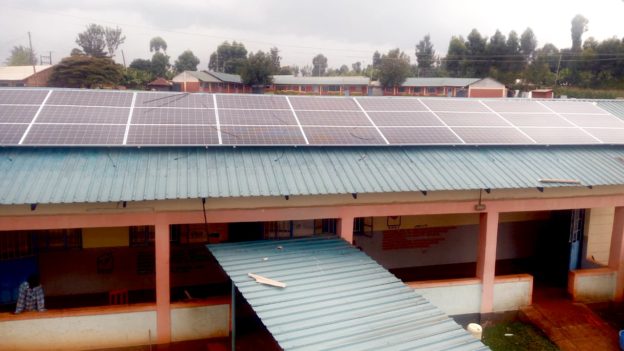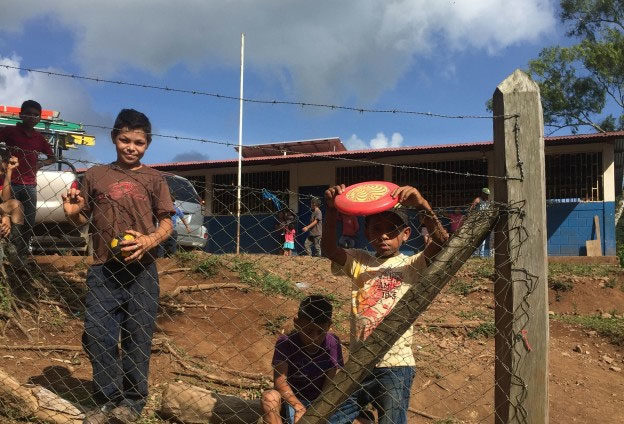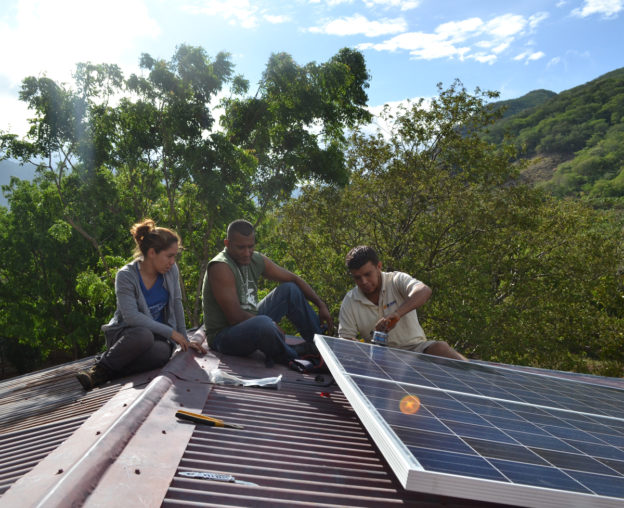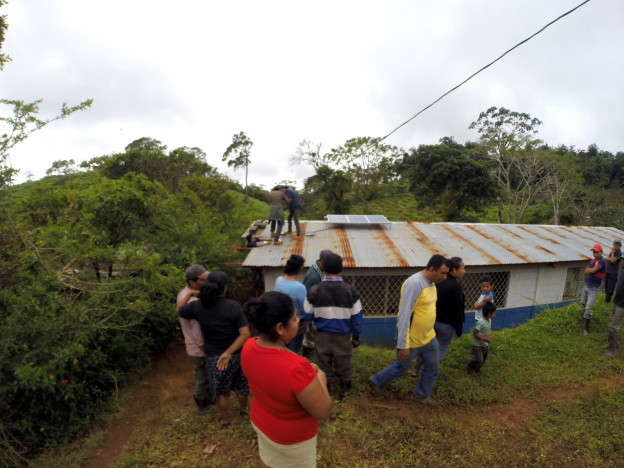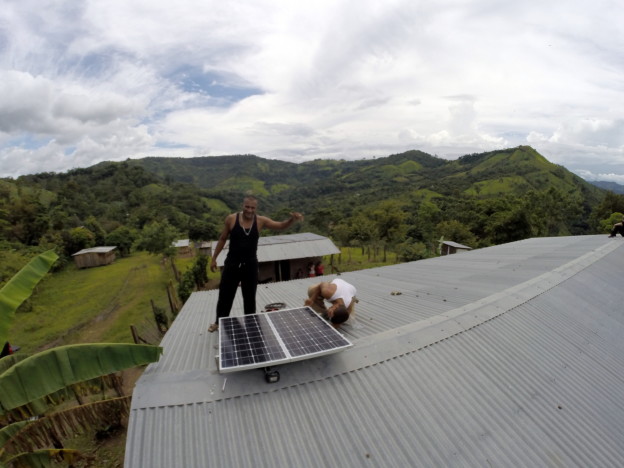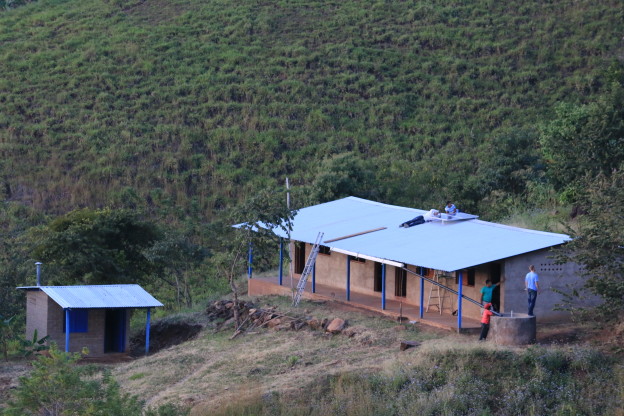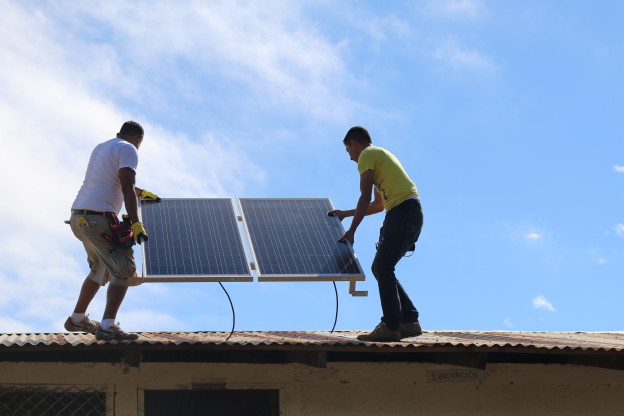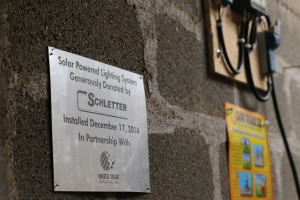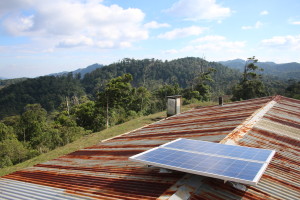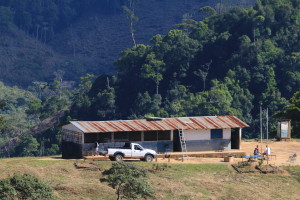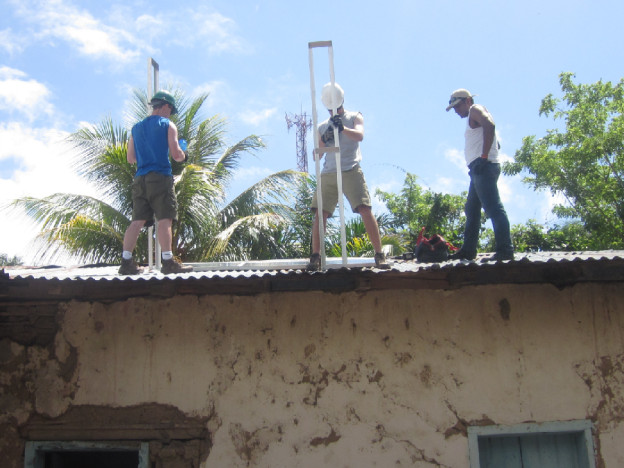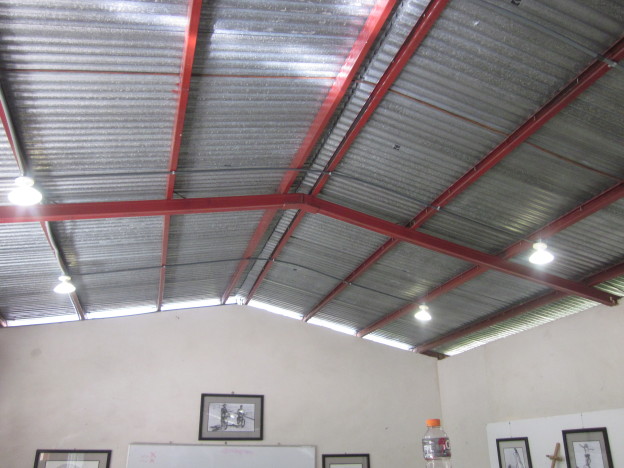In 2020, United Solar Initiative, a global energy access nonprofit project developer, designed and built an 8.7kW solar + storage microgrid in Kenya at a women’s hospital with the support of healthcare NGO funding partner Curamericas Global, microgrid technology provider Schneider Electric, and Kenyan solar installer PowerPoint Systems.
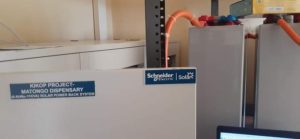
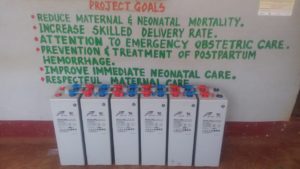
This system provides backup power to critical loads at the birthing center which incurs weekly power outages. The project development was completed remotely during the global pandemic and constructed by the local install team as soon as essential operations were allowed to commence per local Kenyan safety mandates. Since going online in August of 2020, the facility has saved money each month in their energy costs from the utility which allow more hospital supplies to be purchased. Most importantly though, the facility has seen a drastic increase in the number of births that the doctors at the Matongo Clinic are now supporting. Previously, 1 in 3 women gave birth in her home in less sanitary conditions rather than risk being turned away because of a power outage.
As result of Curamerica Global’s engagement in the community and a United Solar Initiative’s investment in the onsite renewable energy at the facility, mothers now have a location they can count on with access to clean and reliable electricity. Today, 95% of deliveries take place at the health facility with a skilled birth attendant.
In June 2016, USI, along with Appropriate Technology students from Appalachian State University, installed a solar PV array in the Santa Ana community. This is the first alternating current (AC) system installed, with hopes that as the Nicaraguan government expands the reach of the grid infrastructure in coming years, this community will eventually be able to connect and disconnect as needed.
Alongside the supervision and guidance of a local solar installation company, Appalachian State students participated in the wiring and commissioning of the solar array to power LED lighting for night classes and cloudy school days, and a radio/CD player to be used for school lessons and community social gatherings.
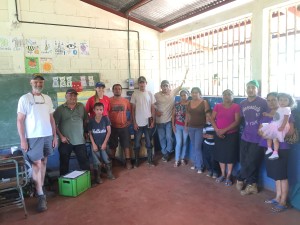
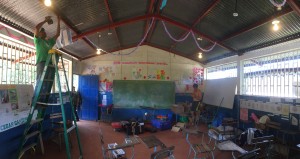
The community of Colocondo is centered around a dirt courtyard surrounded by small homes, a community store, and the school house. A short distance away the Colocondo River winds through the mountains before crashing down Colodondo Falls in Tisey Estanzuela Natural Reserve. The community has a partnership with SONATI, a nonprofit ecotourism organization which brings tourists to a community to see the natural beauty and in return the community pledges to conserve and protect that natural beauty. As part of this partnership, SONATI also works to improve the community in other ways, bringing in educational materials, course ideas and educating the adults on numerous public health initiatives. As part of this desire to improve the community, SONATI partnered with USI to bring electricity to a classroom which previously used kerosene lights to light their classrooms when necessary.
The classroom at Colocondo now has a 500-watt solar array which lights their classroom inside and out and allows for phone charging, TV and video equipment, a CD player, and a computer to use for classes. This represents a huge step for Colocondo and progress towards what large parts of the rest of the world take for granted. The impact this system will have on this community was seen in the faces of the kids who, off from school while the construction was going on, still stayed glued to the school house, watching through the open air windows as the wires were strung through the ceiling and lights were installed from the rafters.
We are very happy to say that Colocondo now has a sustainable source of energy to use for the education of their community and to power their phones and connect them to the world beyond.
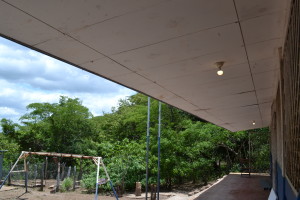
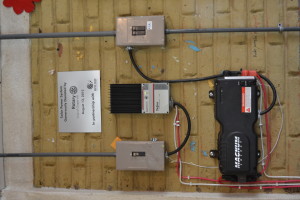
As soon as the two trucks carrying the construction material pulled into San Jose, a crowd of giggling children and curious adults formed outside the school. San Jose is a beautiful village, a sprinkling of houses in the midst of a massive coffee plantation. It’s a village cut off from the world, but with a window out to the mysteries beyond. Every winter hundreds of temporary farm workers descend on the area to pick coffee beans, exchanging stories and dreams in the process. The way the community immediately warmed to the outsiders coming to install lights showed they are used to the excitement of newcomers and the exchange that comes along with them.
The impact that lights and electricity will have on the community is apparent right away. This is a community itching to be a part of the larger world, and itching for opportunities to grow. United Solar Initiative teamed up with Sister Communities of San Ramon to work with the community and design a system that fits their needs and helps give them some of the modernity that was beyond their reach before they had electricity. Before these projects on dark days or at night, when the adults were done working on the coffee farms and want to learn, the school used kerosene lanterns to light the enclosed classrooms. Additionally, the one connection to the outside world, their cell phones, were unable to be used frequently without a way to charge them. Every week community members sent their cell phones to town with whoever was going that week to pay for charging in town, a drain on an already limited income, and a constriction on their only connection to the larger world.
USI worked together with Sister Community of San Ramon to plan and Suni Solar to construct a 250-watt system on the roof of the school San Jose that will give them interior and exterior lights and cell phone charging and the occasional video or computer lesson rain or shine.
We are very happy to say that San Jose now has a sustainable source of energy to use for the education of their community and to connect them to the world beyond the coffee fields.
If you’re looking for Verapaz, go North out of San Ramon on Highway 5, then after El Tuma cross the Tuma River and turn up the dirt road heading into the mountains. Follow that road until it ends and you will arrive at Verapaz. Do not attempt without four wheel drive. Verapaz is one of the most remote communities in the region and as a result has no electricity, and no plans to be connected to the Nicaraguan Grid for at least the next 10 years.
To remedy this, USI partnered with Sister Communities of San Ramon and together developed a plan to bring lights and electricity to the community of Verapaz.
Before these projects on dark days during class, or at night when the adults were done working and wanted to learn, the school used kerosene lanterns to light the enclosed classrooms. Every week community members sent their cell phones to town with whoever was going, to pay for charging in town. This was a drain on an already limited income and a limitation on their only source of connection to the outside world.
USI worked together with Sister Communities of San Ramon to plan and Suni Solar to construct a 200-watt system on the roof of the school Verapaz that will give them interior and exterior lights and cell phone charging even on dark cloudy days.
We are very happy to say that Verapaz now has a sustainable source of energy to use for the education of their community and to power their phones and connect them to the world beyond Verapaz.

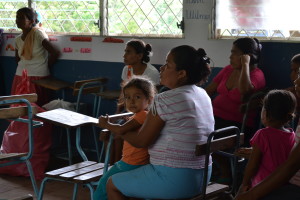
Over the period of three days, two of USI’s volunteers, Steven Thomsen and Charlie Egan, visited Matagalpa, Nicaragua to participate in two projects that are located deep in mountainous terrain miles outside the city. The projects consisted of installing solar panels on the schools Mina Verde 2 and San Antonio de Upa to enable electricity usage through light bulbs for night time education. Suni Solar, a Nicaraguan solar company, teamed up with USI to create a partnership that would provide off-grid solar technology for these schools. “The community in Nicaragua is very much controlled by the sun,” Co-founder and Vice President Steven Thomsen emphasized when being asked about the project that he took part in.
Before these projects, the schools had no electricity in their area and instead used detrimental fuels, such as kerosene to fuel their lanterns, which came to be expensive and ineffective. Now, with 300 watts of energy, this installation gives a place for students to study at night; adults to have night classes; and a gathering place for community events.
As a non-profit organization whose ambition is to create a more efficient way to accommodate energy in developing countries, USI cannot take all the credit for these past projects. USI acted as a project supervisor to Suni Solar to ensure seamless installations from beginning to end. USI’s mission is to help grow the global solar industry by partnering with solar companies that need that additional support.
These projects have not only provided communities with sustainable sources of energy but have also established the groundwork for USI to have impactful relationships with the communities of Mina Verde 2 and San Antonio de Upa.
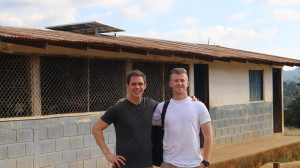
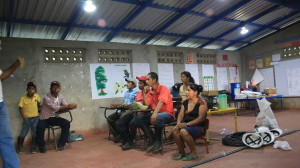
Over the period of three days, two of USI’s volunteers, Steven Thomsen and Charlie Egan, visited Matagalpa, Nicaragua to participate in two projects that are located deep in mountainous terrain miles outside the city. The projects consisted of installing solar panels on the schools Mina Verde 2 and San Antonio de Upa to enable electricity usage through light bulbs for night time education. Suni Solar, a Nicaraguan solar company, teamed up with USI to create a partnership that would provide off-grid solar technology for these schools. “The community in Nicaragua is very much controlled by the sun,” Co-founder and Vice President Steven Thomsen emphasized when being asked about the project that he took part in.
Before these projects, the schools had no electricity in their area and instead used detrimental fuels, such as kerosene to fuel their lanterns, which came to be expensive and ineffective. Now, with 300 watts of energy, this installation gives a place for students to study at night; adults to have night classes; and a gathering place for community events.
As a non-profit organization whose ambition is to create a more efficient way to accommodate energy in developing countries, USI cannot take all the credit for these past projects. USI acted as a project supervisor to Suni Solar to ensure seamless installations from beginning to end. USI’s mission is to help grow the global solar industry by partnering with solar companies that need that additional support.
These projects have not only provided communities with sustainable sources of energy but have also established the groundwork for USI to have impactful relationships with the communities of Mina Verde 2 and San Antonio de Upa.
A productive, reliable community center is crucial for a community to grow through education and encourages community members to interact through cultural gatherings. A lack of electricity can really limit the flexibility of these buildings. This was the case for Casa del Movimiento Comunal in San Ramon, Nicaragua. The center did not have reliable electricity because of frequent local power outages, and a quality light system that did not emit strong enough light. Thanks to collaboration with United Solar Initiative, Strata Solar, Suni Solar, and Appalachian State University’s Department of Technology and Environmental Design, these factors will no longer be an issue. By installing 15 LED lights and 3-80W photovoltaic panels, the community center now has reliable lighting and electricity. The community members and leaders of the center were ecstatic about the installation. Since the completion of the installation, the center has been holding night classes with students through its Young Life program. The final product was beneficial for everyone involved. Appalachian students learned to apply what they learned in the classroom, the community received a sustainable lighting source, and Suni Solar learned from USI personnel ways to improve the installation process.
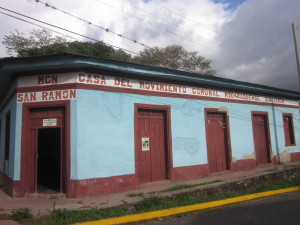
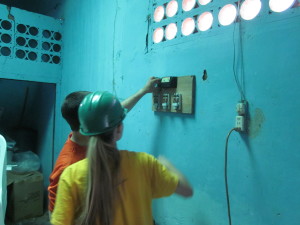
The San Ramon Arts School in San Ramon, Nicaragua, provides the local youth population with the opportunity to be innovative and creative through the medium of art. USI coordinated a project, sponsored by Strata Solar, with Appalachian State’s Department of Technology and Environmental Design to provide electricity and lighting to the San Ramon Arts School. With the help of the Suni Solar team and their supplies, USI was able to successfully complete the installation. By installing 15 LED lights and 3 80W photovoltaic panels, the school now has lighting that did no exist before. The benefits from the project have been monumental to the school and its’ students. The innovation and creativity of Suni Solar, USI, Strata Solar, and Appalachian State have provided the San Ramon Arts School with a state of the art lighting system that will change the school forever.


